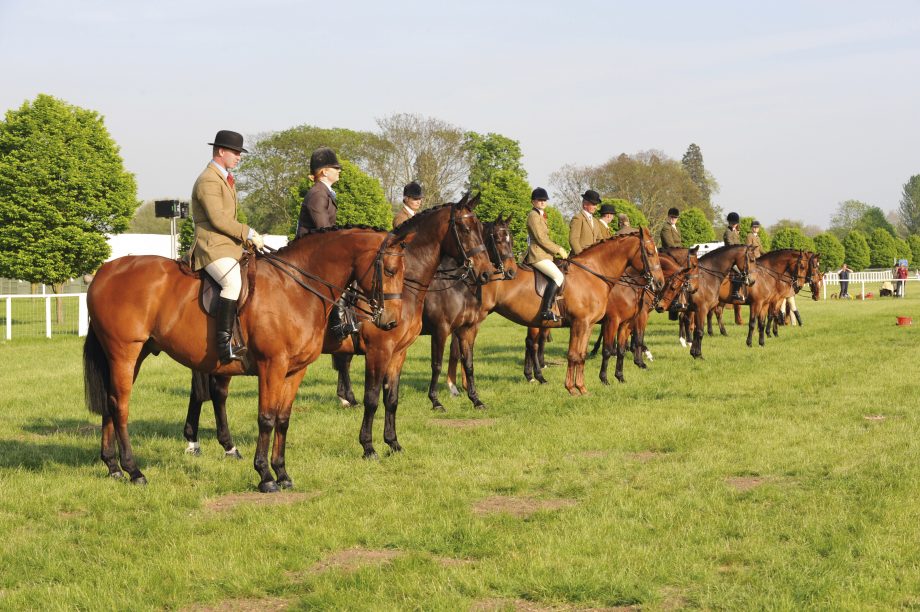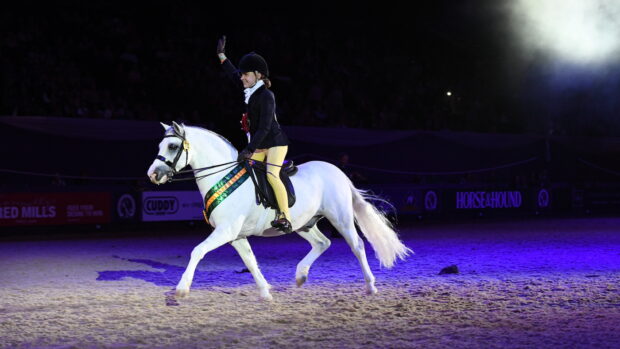Are you new to the show ring? Leading showing producers, owners and judges share their advice on how to get started
Ten-star turnout
Turnout is important for all breeds and types, so make sure to research the correct turnout for the class you wish to enter and the type of horse you have.
Caroline Hamilton, Chair of the Coloured Horse and Pony Society (CHAPS), says: “Make sure your horse or pony is clean and tidy, avoid excessive makeup – a pet hate of mine is painted black hooves on white feet – and, on traditional types, avoid an overly long mane or tail.
“Always have supple, correctly fitted tack. Bridles that are too big or too small never look smart.”
Start with in-hand classes
Gemma Stanford, whose stallion took supreme pony at last year’s Royal International Horse Show and is reigning HOYS highland winner, says: “Highlands mature physically quite quickly but it can take time for them to mentally mature.
“There is always the temptation to do too much too soon but they can quickly switch off and start putting the brakes on. Consider doing in-hand classes first to let your pony get used to the sights and sounds of a busy showground before they start ridden classes.”
Watch the professionals
Shows are never short of experienced riders and handlers, as well as judges to learn from.
“I would say never be afraid to watch, ask for advice, listen to feedback and certainly enjoy it!” advises British Show Pony Society chairman and star panel judge, Pat Pattinson
Work on the walk
Megan Baker, who shows at county level and took supreme at the autumn British Palomino Society show, advises competitors not to forget the importance of a good halt and a good walk.
She says: “Make it a force of habit for your horse to stand up properly every time you ask it to halt, even if it’s when you are bringing in or turning out as it will become second nature and minimise them fussing when stood in front of a judge.
“Don’t forget the walk. One of the most common mistakes is focussing on trot and canter without working on the walk. A good, strong walk can really catch the judge’s eye so make sure you include a good amount of walk within your show.”
The overall picture
Producer Rebecca Pearson highlights the importance of a horse being responsive and supple: “The pony has to be forward and straight in the ring, nobody likes to see a pony being carried and kicked around.
“A pony that is happy and willing gives the judge a much better overall picture.”
Hermits Golden Ace, owned by Jessie Irving and produced by Rebecca Pearson, took overall palomino champion at RIHS at only his second affiliated show.
‘Look at me’ attitude
County level CHAPs judge Emma Rees explains what she looks for when judging:
“In any class judges will look for a good walk and the ‘look at me’ attitude of both horse and rider. When it comes to your individual show make sure to plan it. This is your time to shine: use the space and keep in a balanced rhythm to present the horse to its best. Halt sideways on to the judge to give a final overall picture.”
Working hunters
Emma Rees advises: “Working hunter classes are aimed at horses that show boldness over a fence, so practice over any type of rustic fence is a must. Black water trays are in most courses so reinventing a similar fence at home will make you as prepared as you can be.
“Within the jumping phase I would be looking for a forward pace, horses that aren’t put into a showjumping choppier stride and not ‘checked’ before a fence. I like to see switched on horses that are also mannerly towards the rider.”
Retraining of Racehorses (RoR)
In RoR classes, Richard Ramsay looks for turnout at the same standard as classes for riding horses and hacks. He says: “I would expect ex-racehorses competing in RoR classes to be turned out like any other show class such as riding horse or hacks.
“Properly trimmed and certainly patterns if owners wish it and with well-fitted tack permitted in the ROR rules available on our website.
“I would expect the horses to go in a mannerly and correct way as any show horse -you only have to see these classes now to realise what tremendous strides forward have been made and ex-racehorses are competing in other open classes as well.
“Thanks to RoR the realisation that there is a valuable career for former racehorses in showing as in other disciplines has become very clear.”
Showing ‘spotteds’
Tanisha Mayo, who took supreme champion and champion of the ‘champion of champions’ at the British Spotted Pony Society’s Spotfest last year, explains the importance of schooling.
“I think it’s important for horses and ponies to be well schooled and show good manners in the ring whether you’re showing in-hand or ridden.
“With showing spotted horses and ponies, many people believe it’s all about coat patterns and colours, but their way of going is equally important if not more!
“A happy horse is always going to perform better, so it is very important to me to ensure that my horses are comfortable before going into the ring with their surroundings and what you’re asking them to do. Above all – make sure you have fun!”
Preparing youngstock
When it comes to showing youngstock, preparation is key. Issy Brine, owner of Cash Legend who gained an Elite Premium at the 2015 futurity series and became joint champion of his age group, shares her advice:
“When presenting your horse in front of judges, it’s really important to ensure you give the horse enough time to show itself to its full potential.
“Try not to rush and have a plan before you enter the ring, just as if you were going to ride a dressage test. Allow your horse to settle into their surroundings before asking too much.
“Practise really does make perfect so practise lots of walking and trotting in-hand at home, as well as teaching them to stand nicely for the judges to assess them.
“It’s a great experience to let young horses see the world and gain feedback, so have fun!”
You might also be interested in:

What do I wear in my horse or pony showing class? Read our dress code guide for show riders…

7 hoods that will protect your grooming efforts

How to pull a horse’s mane: your complete guide

From a muddy field to the show ring: a complete guide on how to groom a horse

H&H’s guide to show cob classes: from weight divisions to showing off correctly
How should you present a show cob correctly and how are the different weight categories defined?

A guide to show hack classes: height sections, type and how to impress the judges
H&H looks at the art of producing a show hack...

H&H’s guide to working hunter pony classes: how to present your pony and nail your individual show
“Turnout should be smart and workmanlike...”

Subscribe to Horse & Hound magazine today – and enjoy unlimited website access all year round
Horse & Hound magazine, out every Thursday, is packed with all the latest news and reports, as well as interviews, specials, nostalgia, vet and training advice. Find how you can enjoy the magazine delivered to your door every week, plus options to upgrade your subscription to access our online service that brings you breaking news and reports as well as other benefits.




